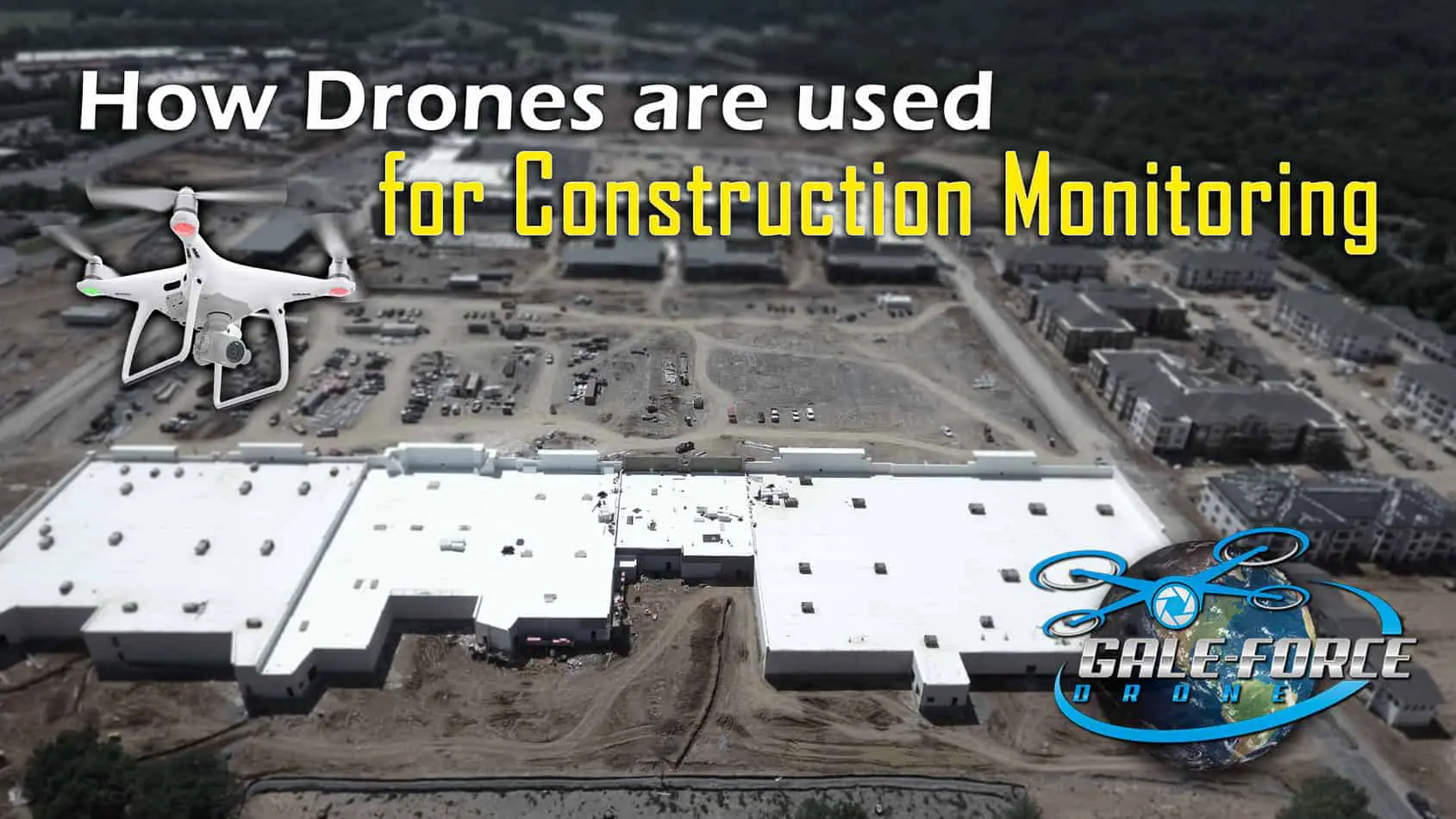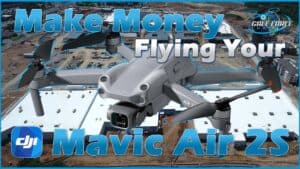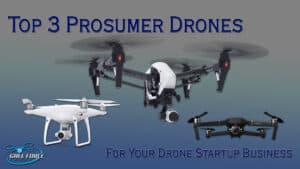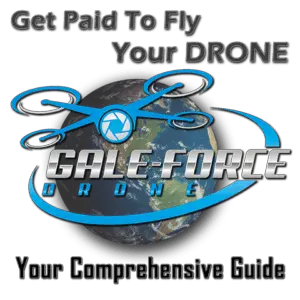
Welcome, fellow drone professionals! If you’re looking to begin offering construction monitoring as a drone service, then this is the perfect guide to help you get started.
Drones have been making a significant impact in construction monitoring for a while now, providing a practical and cost-effective solution for capturing real-time data and delivering the sort of aerial imagery that builders need to keep tabs on the progress of their construction sites.
In this article, we’ll dive deep into the myriad benefits and advantages that come with drone-assisted construction monitoring. We’ll explore the key components and essential considerations that will equip you with the knowledge and confidence to navigate this industry successfully.
Data Collection and Analysis
For construction monitoring, drones play a pivotal role in data collection and analysis, enabling Drone Operators like us to gather valuable insights that were once challenging to obtain. Let me walk you through the key aspects of this process:
Utilizing drones for capturing high-resolution aerial imagery: Drones equipped with high-quality cameras allow us to capture detailed aerial imagery of construction sites. These images provide a comprehensive visual overview, helping us identify potential issues, track progress, and make informed decisions. By flying the drone at different altitudes and angles, we can capture images that cover the entire site, including hard-to-reach areas that are otherwise difficult to inspect.
Applying photogrammetry techniques for 3D modeling and mapping: Photogrammetry is a technique that uses drone-captured images to create detailed 3D models and accurate maps of construction sites. By capturing overlapping images from various angles, we can use specialized software to stitch them together and create a precise representation of the site. These 3D models and maps provide a wealth of information, such as topography, measurements, and spatial relationships, which can be invaluable for project planning and analysis.
Processing data for accurate measurements, volume calculations, and site analysis: The data collected by drones can be further processed to derive precise measurements, perform volume calculations, and conduct in-depth site analysis. By utilizing specialized software, we can accurately measure distances, areas, and volumes within the construction site. This information is essential for various purposes, including material estimation, progress tracking, and quality control. Additionally, by analyzing the collected data, we can identify patterns, trends, and potential issues, allowing us to make data-driven decisions and optimize project outcomes.
These capabilities allow us to provide actionable data to the client, saving valuable time and resources that ultimately contribute to the success of construction projects.
 Click into my article “Can I Make Money with my DJI Air 2S?” to learn about it’s capabilities for Construction Monitoring services.
Click into my article “Can I Make Money with my DJI Air 2S?” to learn about it’s capabilities for Construction Monitoring services.
Software and Automation
To maximize our efficiency and effectiveness in construction monitoring, the integration of drone-specific software and automation makes our job way easier! Let’s get into the key elements that make this integration workable:
Implementing drone-specific software for data management and analysis: The right software can significantly enhance our ability to manage and analyze the data captured by drones. Software solutions like DroneDeploy (and others) provide robust features for organizing, storing, and processing aerial imagery and 3D models. These tools enable us to efficiently store and manage large volumes of data, perform accurate measurements, generate insightful reports, and even collaborate with team members and clients in real-time.
Utilizing automated flight planning and waypoint navigation systems: Drone missions can be streamlined through the use of automated flight planning and waypoint navigation systems. Applications such as DJI FlightHub and Skygrid offer intuitive interfaces that allow us to plan and execute precise flight paths. By defining waypoints, altitude, and other parameters, we can ensure consistent and repeatable data collection, saving time and reducing human error. These automation features also enhance safety by enabling us to pre-program flight routes and focus more on monitoring the construction site.
Integration with project management tools for streamlined workflows: Integration between drone software and project management tools brings significant advantages. By connecting drone data with platforms like Procore, BIM 360, or PlanGrid, we can seamlessly incorporate aerial imagery and 3D models into the existing project workflow. This integration streamlines communication, collaboration, and decision-making processes between stakeholders. Project managers can easily access up-to-date visual data, annotate images, overlay plans, and keep everyone on the same page, fostering transparency and facilitating efficient project management.
As a new drone operator, I was a bit intimidated by these high-tech integrations. But, I soon realized that the quicker I embraced and leveraged these software and automation tools, the more value I could provide as a drone services partner, and as a result, has created long-lasting client relationships. Embracing these technologies sets us apart in the industry, establishing us as trusted partners capable of surpassing client expectations. So seize the opportunity to master these integrations and unlock the full potential of your drone services.

Project Progress Tracking
For construction companies, effective monitoring plays a vital role in ensuring the success of the project. Let’s get into the significance of using drones for project progress tracking and the valuable services it provides:
Accurate and efficient monitoring of construction timelines: Through construction monitoring, we can closely track project timelines and milestones. Drones enable us to capture real-time aerial imagery and data, allowing for accurate assessment of progress. By comparing the actual state of the construction site against the planned timeline, we help the client identify any potential delays or deviations that need immediate attention. This proactive approach helps keep projects on track and mitigates the risk of costly schedule overruns.
Identification of delays, bottlenecks, or deviations from plans: With drones as the eyes in the sky, so to speak, aerial image data quickly identifies any delays or bottlenecks in the construction progress. By capturing detailed imagery and conducting regular site inspections, our data helps the client to detect potential issues that may impact project progress. This early detection allows construction companies to take prompt action, allocate resources accordingly, and address any challenges before they escalate. By proactively managing deviations from the plans, the client can better maintain project momentum and minimize disruptions.
Documentation of project milestones for reporting purposes: Construction monitoring with drones enables us to document key project milestones visually. High-resolution aerial imagery and 3D models provide clear evidence of progress, helping construction companies showcase achievements and communicate effectively with stakeholders. Whether it’s capturing completed structural phases, infrastructure installations, or site transformations, these visual records serve as valuable documentation for reporting, compliance, and marketing purposes.
By offering construction project progress tracking services, we provide construction companies with valuable insights, ensuring projects stay on schedule, mitigating risks, and enabling effective communication with stakeholders.
Quality Control and Inspections
For construction companies, quality control and thorough inspections are critical components of construction monitoring. As drone service providers, we play a vital role in delivering valuable data for ongoing scrutiny of construction projects. So, let’s get into the importance of quality control and inspections in construction monitoring:
High-resolution imagery for identifying defects, errors, or subpar work: Drones equipped with high-resolution cameras enable us to capture detailed aerial imagery, allowing for meticulous inspections of construction sites. By closely examining the images, we help the client to identify potential defects, errors, or subpar workmanship that might otherwise go unnoticed. This early detection empowers construction companies to rectify issues promptly, maintain quality standards, and deliver exceptional results.
Aerial surveys for assessing structural integrity and identifying potential issues: Aerial surveys conducted by drones provide a unique perspective on construction projects, enabling our clients to assess structural integrity and identify potential issues. By capturing comprehensive aerial views, the image data provides insight for possible uneven settling, structural deformations, or any other anomalies that might compromise the project’s stability. These aerial surveys complement traditional inspections, offering a more comprehensive understanding of the construction site’s overall condition.
Facilitating adherence to construction standards and regulations: Compliance with construction standards and regulations, such as those set by organizations such as the Occupational Safety and Health Administration (OSHA) is of utmost importance. Drones help facilitate adherence by capturing detailed evidence of construction activities and providing objective documentation. Construction companies can use this data to demonstrate compliance with safety regulations, environmental standards, and quality guidelines. By embracing construction monitoring with drones, companies can ensure that their projects meet the required standards, fostering trust among clients and stakeholders.
By offering our quality control and inspection services with drones, we contribute to the overall success and integrity of construction projects. The ability to identify defects, assess structural integrity, and ensure compliance helps construction companies deliver high-quality results while mitigating risks.
Enhancing Safety and Security
Lately, I have been engaging in conversations with fellow Drone Service Providers (DSPs) about the benefits of implementing Drone-in-a-box solutions such as the DJI Dock and others. These automated flight systems can be configured to capture a pre-planned set of images, allowing clients to enhance safety and security on construction sites. Let’s get into how these systems (as well as standard drones) contribute to this crucial aspect of the construction site:
Real-time monitoring of construction sites to identify potential hazards: By utilizing Drone-in-a-box solutions, drones offer real-time monitoring capabilities, enabling clients to promptly identify potential hazards. With automated flights capturing imagery in real-time, clients can closely observe the site, detect unsafe conditions, equipment malfunctions, or other risks. This proactive monitoring allows construction companies to take immediate action, ensuring the safety of workers and minimizing accidents.
Surveillance for trespassing, theft, and vandalism prevention: Deploying drones equipped with automated flight systems strengthens surveillance measures, actively deterring trespassing, theft, and vandalism on construction sites. Through continuous monitoring and capturing high-quality imagery, these drones act as a constant presence, discouraging unauthorized access and safeguarding valuable equipment, materials, and assets. This heightened level of security minimizes losses and disruptions, enhancing overall project security.
Improved compliance with safety regulations: Drones, with their advanced capabilities, contribute to improved compliance with safety regulations. By capturing detailed images and footage, clients can ensure adherence to safety protocols, standards, and regulations. The objective documentation provided by drones can be instrumental during inspections and audits, demonstrating compliance with safety guidelines and fostering a safe working environment.
The integration of drones in construction monitoring has a significant impact on enhancing safety and security on construction sites. With our ability to provide real-time monitoring to our clients, surveillance capabilities, and improved compliance, this service plays a pivotal role in safeguarding workers, preventing unauthorized access, and ensuring adherence to safety regulations.
Tracking and Management
Effective tracking and management of construction site inventories are crucial for ensuring non-disruptive project operations. As drone professionals, we understand the importance of utilizing drone technology to assist our clients in tracking their materials and equipment inventories. Let’s get into how we can offer our solutions to help clients by providing valuable insights into managing their inventory.
Utilizing drone imagery to monitor and record inventory levels: By leveraging drone imagery, we provide our clients the abiliy to monitor inventory levels on their construction sites by generating photogrammetric models and orthomosaics. This technology allows us to accurately measure stockpile volumes down to the pound or kilogram and deliver precise data on their material stockpiles, equipment, and supplies. Clients need to be able to quickly identify any discrepancies or shortages, in order to make informed decisions.
Streamlining the tracking process for materials and equipment: Drone data streamlines the tracking process for materials and equipment by providing a bird’s-eye view of the construction site. With this data, the client can efficiently locate and track the movement of materials, monitor the positioning of equipment, and ensure that everything is in the right place at the right time. This streamlined tracking process minimizes manual efforts, reduces errors, and enhances overall project efficiency.
Avoiding costly delays due to inventory shortages or misplacements: With accurate inventory tracking, we help construction companies avoid costly delays caused by inventory shortages or misplacements. By providing real-time data on inventory levels, we enable clients to proactively manage their supplies, ensuring that they have sufficient materials to meet project demands. This proactive approach helps prevent costly interruptions, keeps the project on schedule, and enhances overall productivity.
Our drone construction monitoring services redefine inventory tracking and management. Through advanced techniques such as photogrammetry and orthomosaics, streamlined tracking processes, and proactive inventory monitoring, we empower our clients to optimize their inventory control, minimize delays, and achieve project success.
Theft Prevention
When it comes to preventing theft and ensuring the security of valuable equipment and assets on a construction site is paramount. As dedicated drone operators, we realize the crucial role that drones can play in enhancing theft prevention measures. Let’s get into how our drone services contribute to theft prevention:
Monitoring and securing valuable construction equipment: Drones provide real-time monitoring capabilities that enable our clients the data they need to keep a vigilant eye on construction sites. By conducting regular aerial patrols, we can effectively monitor and secure valuable construction equipment. The aerial perspective allows for the detection of any suspicious activities, identifying potential vulnerabilities, and taking immediate action to prevent theft or unauthorized access.
Tracking and identifying unauthorized movement of assets: Equipped with GPS and advanced geo-referencing capabilities in the image metadata, our drones enable precise monitoring and tracking of construction assets. In cases of unauthorized activity or asset relocation, clients can utilize our image data to promptly identify and notify the relevant authorities. Moreover, our drone surveillance serves as a formidable deterrent, effectively deterring potential theft and bolstering the overall security of construction sites.
Assisting in insurance claims and asset recovery: In unfortunate cases of theft or asset loss, our drone data will prove invaluable in assisting with insurance claims and asset recovery. By capturing high-resolution imagery and detailed documentation of the construction site, we provide the necessary evidence to support insurance claims. Additionally, the collected data can aid in the recovery efforts by assisting law enforcement in identifying stolen assets and their potential whereabouts.
Our drone services offer comprehensive solutions for theft prevention in construction monitoring. Through real-time monitoring, tracking capabilities, and assistance in insurance claims and asset recovery, we help construction companies safeguard their valuable equipment, deter theft, and ensure peace of mind.
Required Equipment
Getting started in construction monitoring requires the right equipment to ensure efficient and effective operations. Let’s talk about the essential tools and specifications you need to consider:
Drone and camera specifications: For Construction monitoring, it’s VERY possible that you can go with the drone that you own. Some considerations will be a need for reliable flight stability, extended battery life, and high-resolution cameras capable of capturing detailed imagery. Consider factors like payload capacity, range, and maneuverability to handle various site conditions.
Additional tools and accessories: You can improve your drone’s performance by investing in extra batteries for longer flight times, propeller guards for added safety, and memory cards with ample storage capacity. Additionally, accessories such as landing pads, carrying cases, and remote controller extensions can improve convenience and protect your equipment during transportation.
Backup systems and maintenance: To ensure uninterrupted operations, it’s a good idea to have a backup system in place. This includes spare parts for your drone and camera, as well as redundant equipment for critical components. Regular maintenance and firmware updates are essential to keep your equipment in optimal condition. Establish a maintenance schedule, conduct pre-flight checks, and adhere to manufacturer guidelines to maximize the lifespan and reliability of your equipment.
 Click into my article “Top 3 Prosumer Drones For Your Drone Startup Business” to see my drone recommendations for Construction Monitoring.
Click into my article “Top 3 Prosumer Drones For Your Drone Startup Business” to see my drone recommendations for Construction Monitoring.
Training and Certification
To be successful in the field of construction monitoring, professional training and certification can be an essential part of developing this service. Here are some key considerations to help you acquire the necessary skills and credentials:
Emphasizing the importance of professional training and certification: Obtaining formal training and certification demonstrates your commitment to professionalism and competence. It enhances your credibility as a drone services provider and assures clients that you adhere to industry best practices.
Identifying reputable training programs and organizations: Research reputable training programs and organizations that offer comprehensive courses in drone operation, flight skills, safety protocols, and data processing. Look for programs that cover both theoretical knowledge and practical hands-on experience.
Building a strong foundation in flight skills, safety, and data processing: Focus on developing a strong foundation in flight skills, safety procedures, and data processing techniques. This includes understanding airspace regulations, emergency procedures, and data analysis tools. Practical experience and simulated scenarios will help you gain confidence and competence in real-world construction monitoring operations.
Depending on your experience, investing time and expense in training and certifications ensures that we possess the necessary expertise to handle the full extent of capabilities in construction monitoring. By continuously improving our skills and staying up-to-date with industry advancements, we can provide high-quality services that meet the evolving needs of construction companies.
Building Your Portfolio and Network
As a new drone pilot or service provider entering the world of construction monitoring, building a strong portfolio and network is crucial for establishing your credibility and attracting clients. Here’s how I got started building out my portfolio to showcase my expertise and connect with industry professionals:
Showcasing your expertise through a portfolio of construction monitoring projects: When I began my journey as a drone pilot in construction monitoring, I took a proactive approach to build my portfolio. I visited construction sites and sought permission from the site foreman to fly and capture the site. While some granted permission and others didn’t, this allowed me to practice my flight skills, refine my capturing techniques, and process orthomosaics while measuring stockpiles. This hands-on experience was crucial in gaining confidence and expertise in the field.
To establish a strong portfolio, start by undertaking small-scale projects, even if it means offering your services for free initially. Document the process and outcomes through high-quality imagery and reports, showcasing your ability to capture critical data and provide valuable insights. When presenting your portfolio to potential clients, emphasize the construction monitoring challenges you addressed and the positive outcomes achieved. This tangible evidence of your expertise will help you stand out and attract clients who recognize the value of your drone services.
Collaborating with industry professionals and associations: In the years since I got into offering construction monitoring, I have gained invaluable knowledge by actively collaborating with other drone operators. This has not only expanded my network but has also provided me with valuable insights. You might be wondering, how did I find these professionals? Well, it’s actually simple. I made a point to attend industry conferences, seminars, and trade shows, where I had the opportunity to connect with fellow drone operators and industry experts. I would also recommend joining relevant associations and organizations focused on construction monitoring or the drone industry has proven to be a fruitful way to establish connections. These connections have the potential to foster valuable partnerships and generate referrals, contributing to the growth and success of my business.
By actively building my portfolio and network, I was able to grow my visibility, credibility, and opportunities for growth in the construction monitoring industry. As we showcase our expertise, collaborate with industry professionals, and engage with online platforms, you’ll gradually establish a solid reputation and attract clients who recognize the value of your drone services.
Understanding Legal Requirements
When it comes to regulations and compliance, staying informed is paramount. As a drone professional, it’s important that we take it upon ourselves to understand the importance of understanding and adhering to legal requirements. Here are key areas to focus on:
Familiarizing yourself with local aviation regulations and permits: It’s essential to be well-versed in the aviation regulations specific to your location. This includes obtaining the necessary permits for operating drones on construction sites. Familiarize yourself with airspace restrictions, flight altitude limits, and any specific regulations pertaining to drone operations in construction.
Complying with privacy and data protection laws: As drones capture aerial footage and collect data, we need to use courtesy and respect privacy and data protection laws. Be mindful of capturing images or videos of individuals without their consent and ensure compliance with local privacy regulations. Safeguarding client data and implementing secure data storage practices should also be a priority.
Ensuring adherence to construction site safety guidelines: Construction sites have their own safety guidelines and protocols. Before starting any project, it’s essential to familiarize yourself with the site-specific safety requirements and protocols. This includes understanding the designated flight zones, safety procedures, and any specific precautions to be taken when operating drones around construction activities.
Insurance and Liability
Operating drones in the construction industry comes with inherent risks, and it’s crucial to protect yourself and your clients through proper insurance coverage. Here’s what you need to consider:
- Exploring insurance options for drone operations in construction: Investigate insurance policies tailored specifically for drone operations in the construction industry. Look for coverage that includes liability insurance, equipment protection, and potential damage caused by drone operations. Some well-known drone insurance brands to consider are DroneInsurance.com and SkyWatch. Assess the scope and limitations of the insurance policies offered by these brands and choose the ones that best suit your business needs.
Understanding liability coverage for potential accidents or damages: Accidents or damages can occur, even with the utmost precautions. Understand the liability coverage provided by your insurance policy, including coverage for third-party property damage or bodily injury. It’s crucial to have appropriate coverage that protects both you and your clients in the event of any unforeseen incidents.
Understanding the legal requirements, securing appropriate insurance coverage, and mitigating risks through training and certifications are essential steps for maintaining compliance and protecting your business.
This might seem like a lot of information for a relatively simple drone service. However, construction monitoring can be a complex service that offers a range of opportunities for drone operators. From basic progress reports to advanced surveillance, using automated drone systems, the possibilities are vast. Personally, I found that growing organically into this service offering was the most effective approach, and if you’re just starting out, I encourage you to do the same. This guide is intended to provide you with comprehensive knowledge and serve as a roadmap as you grow into this service offering. I hope you have found the information you needed, and please don’t hesitate to reach out if you have any questions. I would also enjoy hearing about your experiences as you get into any of the drone services I talk about on my blog.
